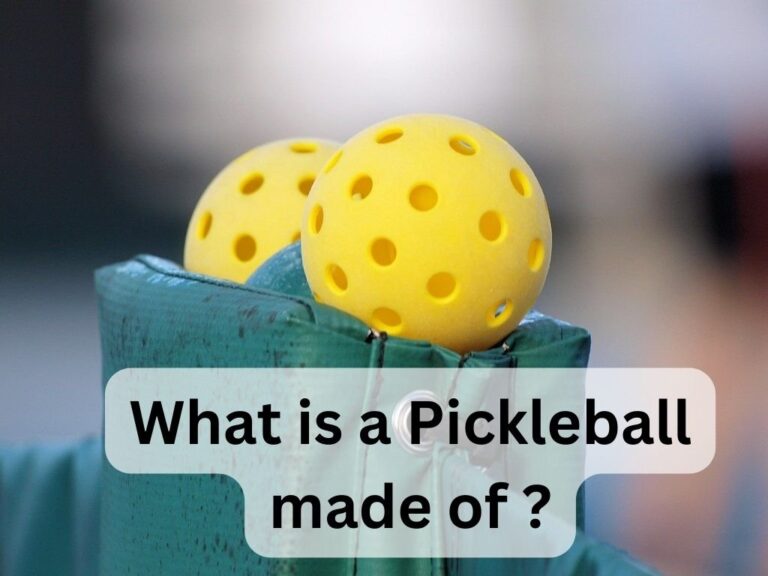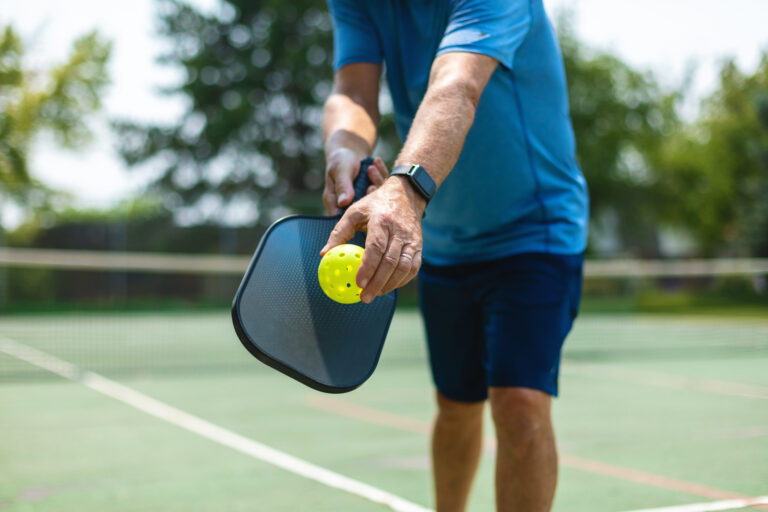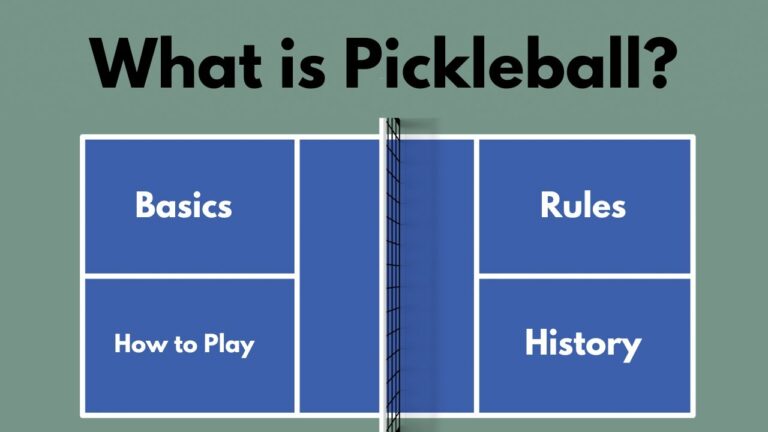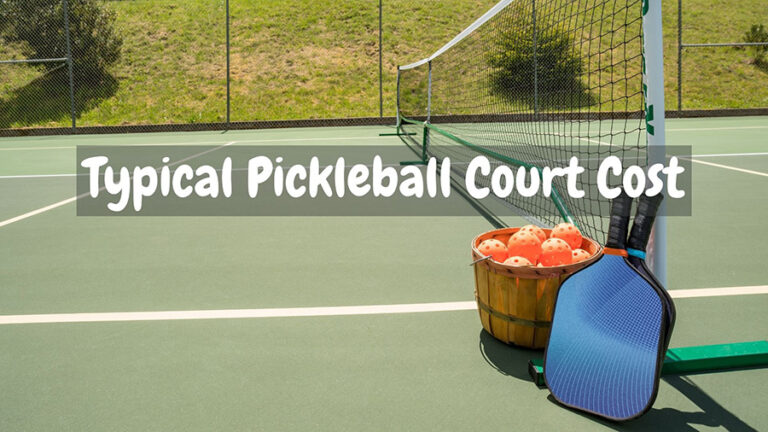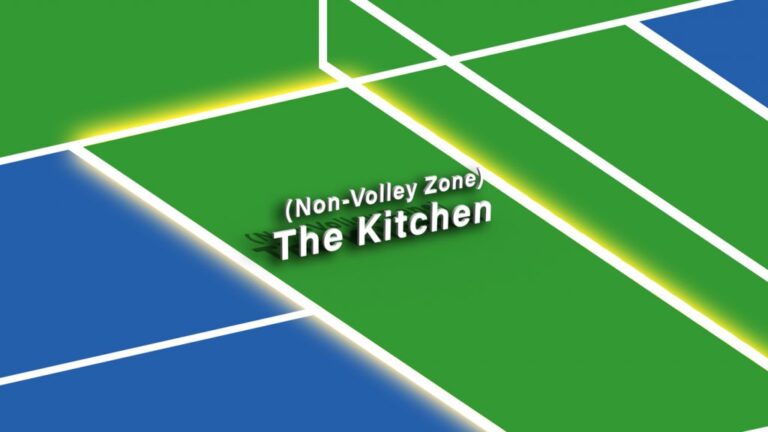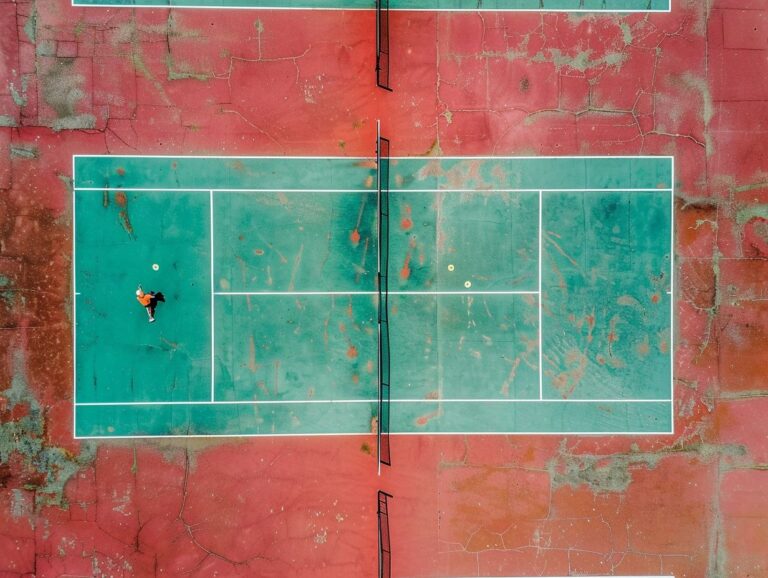How to Serve in Pickleball for Beginners: Master the Perfect Serve
How to Serve in Pickleball for Beginners: Master the Pickleball Serve!
This comprehensive guide teaches beginners the essential rules, techniques, and strategies for serving effectively in pickleball. You’ll learn how to perform a legal serve, master the proper form and placement, and identify common mistakes to avoid. We’ll also explore different types of serves and provide practice drills to help you develop a consistent, reliable serve. With this knowledge, you’ll start each point with confidence and control, setting the foundation for success on the pickleball court.
Serving is one of the most important shots in pickleball, as it sets the tone for each point. A good serve can put pressure on your opponent and give you an advantage, while a weak serve can put you on the defensive from the start. That’s why it’s essential for beginners to take the time to learn how to serve in pickleball correctly.
Key Takeaways
- The serve is one of the most important shots in pickleball, setting the tone for each point.
- A legal serve must be performed underhand, with the paddle face below the wrist, and the ball contacted below the waist.
- The two main types of serves are the underhand serve and the drop serve.
- Mastering the basic underhand serve involves developing a comfortable grip, maintaining a stable stance, and following a three-step serving motion.
- Effective serve placement keeps your opponent off balance, sets up your next shot, and exploits your opponent’s weaknesses.
- Variations of the beginner serve include the soft serve, underhand slice serve, and serves with topspin or backspin.
- Practice drills such as shadow serving, short-distance serving, and serving for accuracy can help improve your serve consistency and placement.
- Focusing on consistency over power, experimenting with different techniques, and practicing regularly are key to developing a strong and effective serve.
By understanding the fundamentals of how to serve in pickleball for beginners, practicing proper technique, and incorporating variations and drills into your training, you’ll be well on your way to mastering this crucial shot and taking your pickleball game to the next level.
Understanding the Basics of Serving in Pickleball
Before we dive into the nitty-gritty of serving techniques, let’s first understand the basic rules of serving in pickleball.
What is a legal serve in pickleball?
A legal serve in pickleball must meet the following criteria:
- The serve must be performed with an underhand motion
- The paddle face must be below the wrist
- The ball must be contacted below the waist
- The server must keep both feet behind the baseline and within the confines of the serving area
- The ball must clear the net and land in the diagonal service court
If any of these criteria are not met, the serve is considered a fault and the server loses the point.
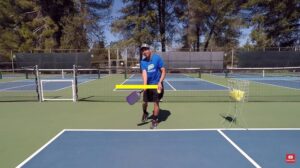
The two main types of serves
There are two main types of serves in pickleball:
- Underhand serve: The most common type of serve, performed by swinging the paddle in an upward motion from below the waist.
- Drop serve: Involves dropping the ball and hitting it after it bounces. This serve is less common but can be effective in certain situations.
Common serving mistakes to avoid
As a beginner, it’s easy to make mistakes when serving. Some common serving mistakes include:
- Foot faults: Stepping on or over the baseline during the serve
- Double faults: Failing to make a legal serve on both attempts
- Exceeding the maximum serve height: The highest point of the paddle head cannot be above the server’s wrist
- Wrong service court: Failing to serve diagonally into the correct service court
- Inconsistent toss: Tossing the ball too high or too low, making it difficult to hit consistently
By avoiding these common mistakes, you’ll be well on your way to developing a reliable serve.
Mastering the Basic Underhand Serve
Now that you understand the basic rules of serving, let’s focus on mastering the basic underhand serve.
Grip
A comfortable and controlled grip is essential for a consistent serve. Most beginners find success with either the continental grip or the eastern grip.
| Grip | Description | Pros | Cons |
|---|---|---|---|
| Continental Grip | Hand placed on the paddle as if holding a hammer | Allows for a variety of shots and spins | Can be less powerful than other grips |
| Eastern Grip | Similar to shaking hands with the paddle | Provides a balance of power and control | Can be less versatile than the continental grip |
Experiment with both grips to find which one feels more comfortable and natural for you.
Stance and Positioning
Proper footwork and body positioning are key to a successful serve. Here are some tips for setting up your stance:
- Stand behind the baseline with your feet shoulder-width apart
- Distribute your weight evenly between both feet
- Face your body towards the net, with your non-hitting shoulder slightly forward
- Keep your knees slightly bent and your core engaged
By maintaining a stable and balanced stance, you’ll be able to generate more power and control in your serve.
The Serve Motion
The serve motion can be broken down into three main steps:
- Dropping the ball:
- Hold the ball in your non-hitting hand at about waist height
- Release the ball and let it bounce once before hitting it
- Keep your arm relaxed and let the ball drop naturally
- Swinging and contacting the ball:
- Swing your paddle in a low-to-high motion, making contact with the ball just after it bounces
- The ideal contact point is just in front of your body, with the paddle face pointing slightly upward
- Keep your wrist firm and your arm extended as you make contact
- Follow-through:
- After contacting the ball, continue the swinging motion and follow through towards your target
- The follow-through helps with both power and accuracy
- Finish with your paddle pointing towards your target and your arm fully extended
By breaking down the serve motion into these three steps, you can focus on each part individually and develop a more consistent and effective serve.
Targeting Your Serve
Now that you’ve got the basic serve motion down, it’s time to focus on targeting your serve.
The importance of serve placement
Effective serve placement can make a big difference in your success on the court. Here are some benefits of good serve placement:
- Keeps your opponent off balance: By mixing up your serve placement, you can keep your opponent guessing and prevent them from getting into a rhythm
- Sets up your next shot: A well-placed serve can put you in a good position to attack on the next shot
- Exploits your opponent’s weaknesses: If you know your opponent struggles with a particular type of serve (e.g. deep serves to the backhand), you can target that area to gain an advantage
Targeting the diagonal service court
In pickleball, serves must be hit diagonally into the opponent’s service court. This means that if you’re serving from the right side of the court, your serve must land in the left service court of your opponent, and vice versa.
Here’s a table to help you remember which service court to target:
| Your Serving Position | Target Service Court |
|---|---|
| Right side | Opponent’s left |
| Left side | Opponent’s right |
By consistently hitting your serve into the correct service court, you’ll reduce the number of faults and improve your overall serving accuracy.
Find your nearest place to play and start now!
Tips for consistent serve placement
To improve your serve placement, focus on your body positioning and aim. Here are some tips to help you serve more consistently:
- Keep your shoulders square to your target and your arm in line with your body during the serve motion
- Aim for a specific spot on the court, rather than just trying to get the ball over the net
- Practice serving to different parts of the service court (e.g. deep, wide, at the body) to develop a variety of serves
- Use visual cues (e.g. the corner of the service court, the center line) to help you aim your serve
By focusing on these key elements of serve placement, you’ll be able to develop a more accurate and effective serve.
Variations of the Beginner Serve
Once you’ve mastered the basic underhand serve, you can start to experiment with variations to keep your opponents on their toes.
The Soft Serve
The soft serve is all about control and accuracy. By taking some pace off the ball, you can place it exactly where you want it and make it harder for your opponent to attack.
To hit a soft serve:
- Use a continental or eastern grip
- Take a shorter backswing than you would for a regular serve
- Focus on making contact with the ball at the bottom of your swing
- Follow through towards your target, but with less speed than a regular serve
The soft serve can be especially effective when serving into the wind or against an opponent who likes to attack the serve.
The Underhand Slice Serve
Adding a little slice to your serve can make it harder for your opponent to return. To hit a slice serve, angle your paddle face slightly to the side as you make contact with the ball. This will create sidespin and cause the ball to curve in the air.
To hit an underhand slice serve:
- Use a continental grip
- Angle your paddle face slightly to the right (for a right-handed player) or left (for a left-handed player) as you make contact with the ball
- Focus on brushing the side of the ball with your paddle, rather than hitting it straight on
- Follow through towards your target, allowing your paddle to naturally rotate with the spin
The underhand slice serve can be a great way to mix up your serves and keep your opponent guessing.
Serving with spin
In addition to the slice serve, you can also experiment with topspin and backspin serves. A topspin serve will dip down after crossing the net, while a backspin serve will float and stay low.
To hit a topspin serve:
- Use an eastern or semi-western grip
- Brush up the back of the ball as you make contact
- Follow through towards your target, allowing your paddle to naturally rotate with the spin
To hit a backspin serve:
- Use a continental grip
- Brush down the back of the ball as you make contact
- Follow through towards your target, allowing your paddle to naturally rotate with the spin
Experiment with different spins to see what works best for you and your playing style. Learn what makes a serve legal in pickleball!
Practice Drills for Beginners
Practice makes perfect, and this is especially true when it comes to serving in pickleball for beginners. Here are some drills to help you improve your serve:
Shadow Serving
Shadow serving involves practicing the serve motion without actually hitting a ball. This is a great way to work on your technique and build muscle memory.
To practice shadow serving:
- Stand in your serving position without a ball
- Practice the serving motion, focusing on your grip, stance, and swing
- Repeat the motion several times, gradually increasing your speed and power
- Visualize the ball and imagine hitting it to your target
Shadow serving is a great way to warm up before a match or practice session.
Short-distance Serving
Start by serving from a short distance, either against a wall or with a partner standing close to the net. This will help you focus on your form and accuracy without worrying about power.
To practice short-distance serving:
- Stand about 10-15 feet away from a wall or partner
- Practice serving the ball, focusing on your technique and accuracy
- Gradually increase your distance from the wall or partner as you become more comfortable with the motion
Short-distance serving is a great way to build confidence and consistency in your serve.
Serving for Accuracy
Set up targets on the court (such as cones or chalk marks) and practice serving to specific spots. Start with larger targets and gradually make them smaller as your accuracy improves.
To practice serving for accuracy:
- Set up targets in different parts of the service court (e.g. deep, wide, at the body)
- Practice serving to each target, focusing on your aim and technique
- Keep track of how many serves you make into each target
- Gradually make the targets smaller as your accuracy improves
Serving for accuracy is a great way to develop a variety of serves and improve your overall serving percentage.
Additional Tips for Beginner Servers
Here are a few more tips to keep in mind as you work on your pickleball serve:
- Focus on consistency over power: As a beginner, it’s more important to get the ball in play consistently than to hit it hard. Work on developing a reliable, consistent serve before adding power.
- Don’t be afraid to experiment: Everyone’s serve is a little different, so don’t be afraid to experiment with different grips, stances, and serving styles to find what works best for you.
- Vary your serves: Mix up your serves to keep your opponent guessing. Use a combination of deep, short, and angled serves to prevent them from getting into a rhythm.
- Practice, practice, practice: The only way to improve your serve is to practice regularly. Set aside time each week to work on your serve, either alone or with a partner.
- Watch and learn: Pay attention to how more experienced players serve and try to incorporate their techniques into your own game. You can also watch instructional videos or attend clinics to learn from certified pickleball instructors. Master your game with these pickleball serve tips
By following these tips and putting in the time and effort to practice, you’ll be well on your way to developing a strong and effective serve.
Common Pickleball Serve FAQs
What is the ideal height for a pickleball serve?
The ideal height for a pickleball serve is just above the net. This allows you to clear the net easily while still keeping the ball low and hard to return.
Can you serve overhand in pickleball?
No, serves must be hit underhand in pickleball. Overhand serves are not allowed.
How many serves do you get in pickleball?
In pickleball, each player gets one serve attempt per point. If the serve is a fault, the server loses the point and the other team gets to serve.
What is a fault in pickleball serving?
A fault in pickleball serving includes:
- Foot faults (stepping on or over the baseline)
- Double faults (failing to make a legal serve on both attempts)
- Exceeding the maximum serve height (the highest point of the paddle head cannot be above the server’s wrist)
- Serving into the wrong service court
- Failing to make the serve over the net and into the correct service court
If any of these faults occur, the server loses the point and the other team gets to serve.
Gear Recommendations for Beginners
If you’re just starting out in pickleball, it’s important to have the right gear. Here are some paddle recommendations for beginners:
| Paddle | Description | Price Range |
|---|---|---|
| Paddletek Phoenix Pro | Lightweight paddle with a balance of power and control | $80 – $100 |
| Onix Graphite Z5 | Versatile paddle with a large sweet spot and excellent feel | $90 – $110 |
| Selkirk Sport NEO | Durable, reliable paddle at an affordable price point | $50 – $70 |
In addition to a good paddle, beginners should also invest in comfortable, supportive shoes and moisture-wicking clothing to stay cool and dry on the court.
Conclusion
Serving is a crucial skill in pickleball, and mastering it can take your game to the next level. By understanding the basic rules, practicing proper technique, and experimenting with variations, you’ll be well on your way to becoming a confident and consistent server.
Remember, the key to a great serve is practice and patience. Don’t get discouraged if you don’t see immediate results – keep working at it and you’ll improve over time.
At Pickleball Toolbox, we’re here to support you on your pickleball journey. Be sure to check out our other resources for more tips and advice on how to serve in pickleball for beginners and improve your overall game. Now get out there and start serving!

